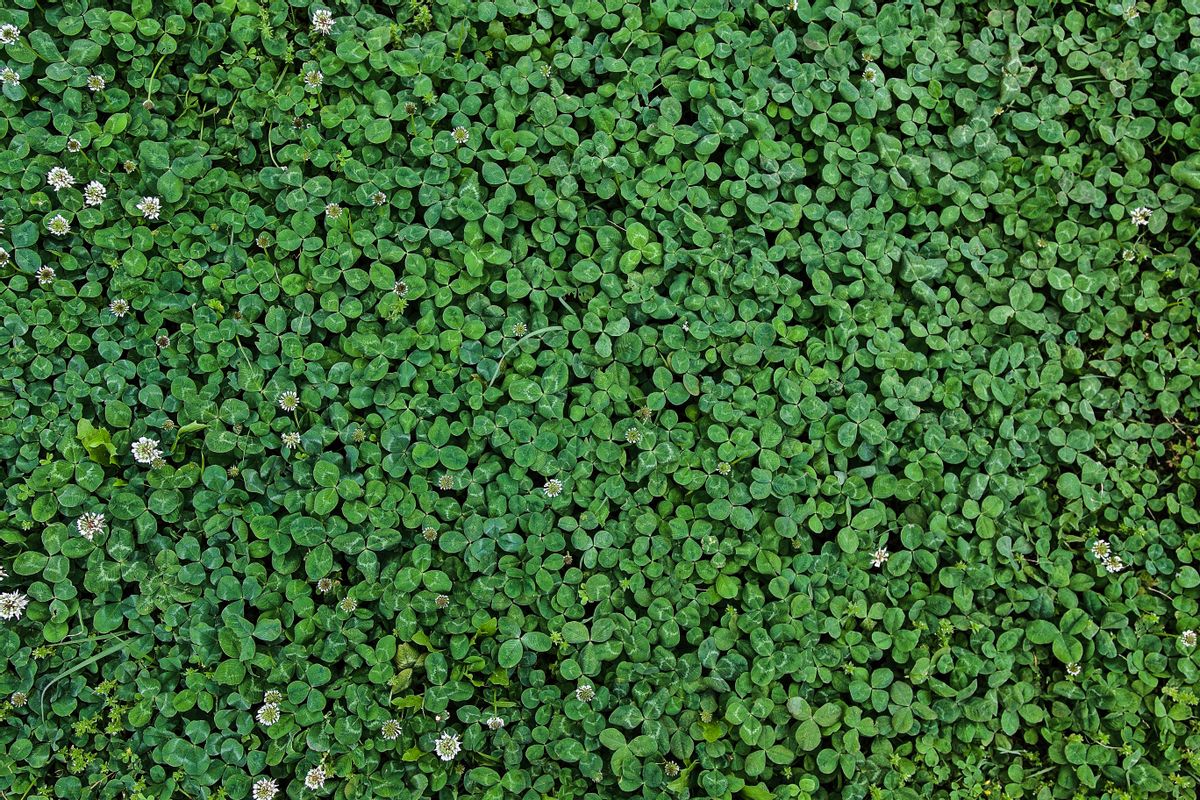Every March, millions of Americans, Irish or not, celebrate St. Patrick's Day, the national holiday of Ireland and Northern Ireland, by drinking Irish liquor and displaying the shamrock and other symbols of the Emerald Isle. But a closer examination of the traditions might lead to a question: Why the shamrock, exactly? It's green, but most plants are green, and you don't see them representing Northern Ireland on the United Kingdom's coat of arms or on the tail of Aer Lingus planes.
As with many holiday symbols, the shamrock's importance began as a legend that grew until it obtained its current symbolic relevance to Ireland as a whole. And as it turns out, that legend has been around long enough that even botanists had to debate what a "true shamrock" really was.
What Is a Shamrock?
If you want an easy answer, a shamrock is a three-leafed clover. The problem with that answer is that there are a lot of types of clover, and almost all of them have three leaves. In fact, it's so well-known that clovers have three leaves that true clovers have the scientific name Trifolium, Latin for "three leaves." Even the word "shamrock" is an English transliteration of the Irish "seamróg," which means "little clover."
But to an untrained eye, the "true" shamrock is hard to identify. Because clovers are just sprouting in spring, there are fewer identifying characteristics, like flowers, that can help someone tell them apart.
An article in Smithsonian Magazine explaining the confusion found references to at least five separate plants being labeled as the shamrock — and some of them weren't even in the clover family.
A British botanist claimed that wood sorrel, Oxalis acetosella, was the "true" shamrock in 1830. But a study from 1878 suggested that yellow clover (called Trifolium minus or dubium) or black medick (Medicago lupulina) was the real deal.
In 1892, an Irish botanist named Nathaniel Colgan decided to put the theories to the test by asking people across Ireland to send him shamrocks. When Colgan grew the samples, he discovered that they were mostly yellow clover (T. minus) with some white clover (T. repens). He repeated the experiment at a larger scale the following year and discovered similar results: mostly white and yellow clover, this time mixed with a smattering of red clover (T. pratense) and black medick (M. lupulina).
Reading Colgan's introduction to the 1892 paper, he seemed to have expected the finding:
From a survey of the literature, the conclusion was irresistible that the question as to the species of the Shamrock had never been seriously studied by any competent botanist, perhaps because the subject was considered too trivial for serious treatment, perhaps because any attempt to go into it exhaustively may have been checked at the outset by the thought that the Irishman was content to wear, as the national badge, any well-marked trifoliate leaf. Such a thought, however, could only have entered the mind of an alien. Every Irishman, and every Englishman long domiciled in Ireland, well knows that the Irish peasant displays great care in the selection of his Shamrock. There is for him one true Shamrock and only one; but unfortunately for the inquiring botanist, the marks by which the Irishman, may we say, distinguishes the plant, are very largely negative. He can tell us what the Shamrock is not, rather than what it is.
According to the Smithsonian Magazine article, E. Charles Nelson, a horticultural taxonomist at Ireland's National Botanic Gardens, ran a study and found a similar distribution. Nelson concluded that there was no single species that was the "true" shamrock.
Why St. Patrick's Day?
Scientific classification aside, why the shamrock? The legend, which dates as far back as 1727, relates it to St. Patrick himself, and Ireland's conversion to Catholicism.
The problem is that St. Patrick lived long enough ago that the historical record is quite fuzzy. Patrick lived around the fourth or fifth century in Britain, then controlled by the declining Roman empire. In his younger years, he was enslaved and taken to Ireland, before somehow making his way back to Britain. He became a priest and traveled back to Ireland, where he began converting people to Catholicism. He supposedly died on March 17, thus explaining the timing of the holiday.
During his time as a priest in Ireland, Patrick supposedly used the shamrock's three leaves to explain the concept of the Holy Trinity to the native Irish population. Based on the fact that we celebrate his holiday, it appears to have gone over well.
Except, as usual with these legends, there's no real evidence backing it up. The earliest tale of the story comes from a botanical treatise written by Caleb Threlkeld, a British minister:
This Plant is worn by the People in their Hats upon the 17. Day of March yearly, (which is called St. Patrick's Day.) It being a Current Tradition, that by this Three Leafed Grass, he emblematically set forth to them the Mystery of the Holy Trinity.
However that be, when they wet their "Seamar-oge," they often commit Excess in Liquor, which is not a right keeping of a Day to the Lord; Error generally leading to Debauchery.
Threlkeld described the plant as a white-flowered form of the red clover (T. pratense), by the way.
Author Niall Mac Coitir mentions a 1681 reference to someone wearing shamrocks on St. Patrick's Day in his book "Ireland's Wild Plants," but he, too, could not find a reference to the conversion story before Threlkeld's treatise.
More than 340 years later, however, the legend of the shamrock continues to live on as a symbol of more than just St. Patrick, but of Ireland as a whole.
